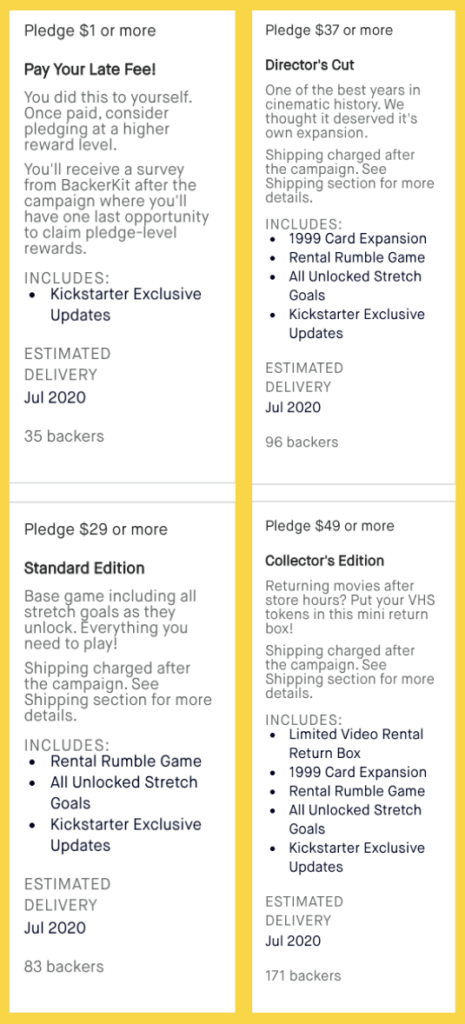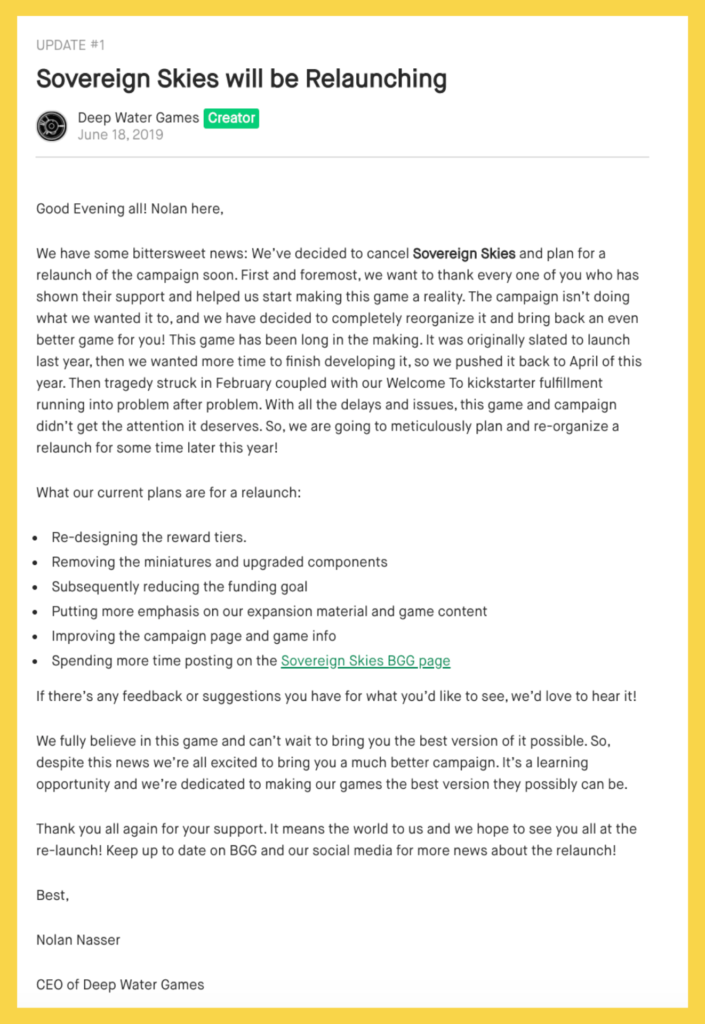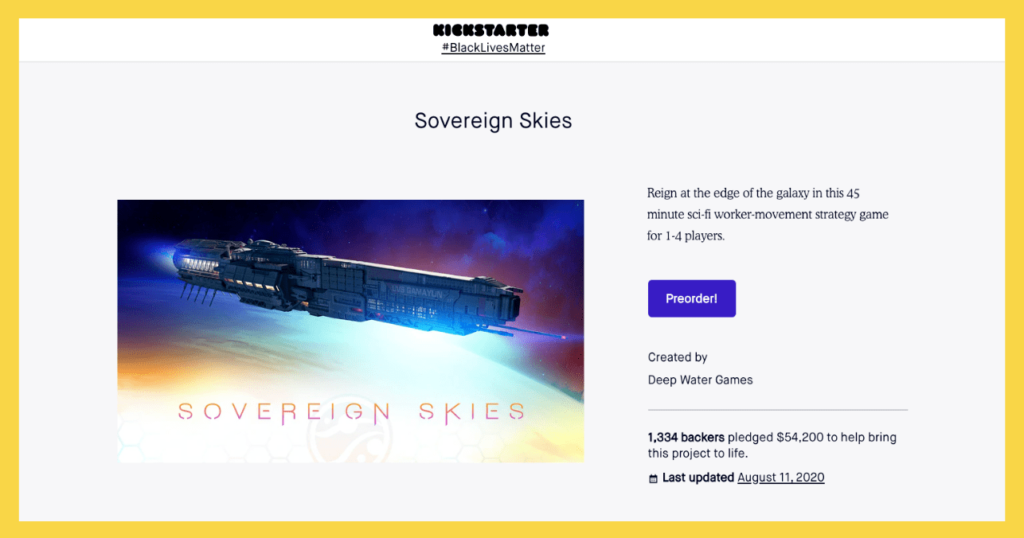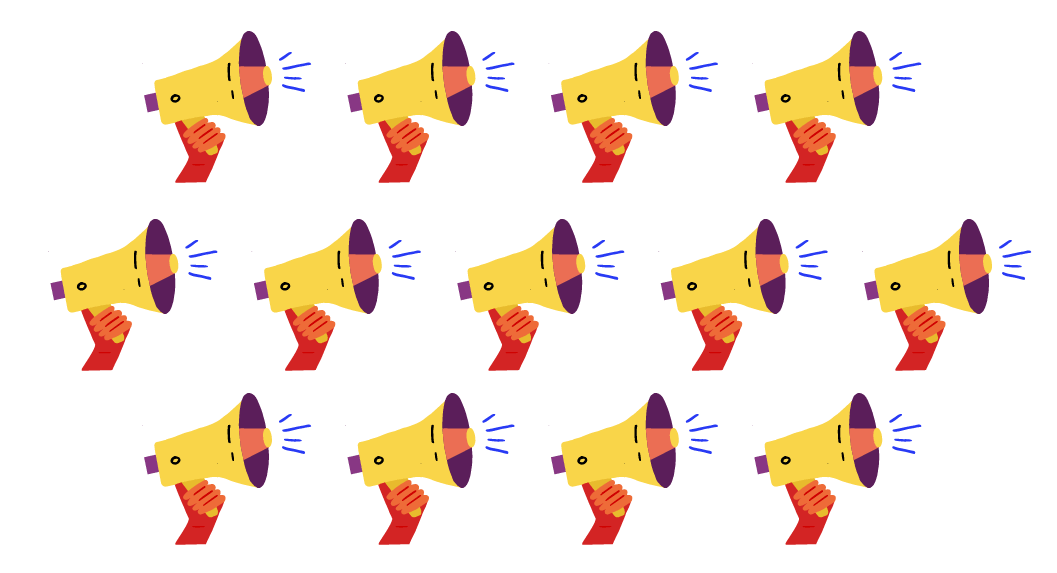Nearly 500,000 projects have launched on Kickstarter since the company was founded in 2009. Only 186,821 of those projects have been successfully funded. Failure is real, and as a creator, it may be something that you’ll have to contend with — or maybe even something that you’re facing right now. The good news? Your crowdfunding journey doesn’t have to end with a failed Kickstarter campaign.
Many creators take what they’ve learned from their unfunded campaigns, and successfully relaunch their projects. Some creators even surpass their original funding goals the second time around. Being unfunded is a painful experience. But you can rebound from a failed Kickstarter project. Here are a few steps that you can take to get on the right track.
Your project is unfunded — now what?
If your project doesn’t hit its goal or is not trending to, it’s ok to take a breather. Give yourself some time to rest before you make your next move. Running a crowdfunding campaign can be stressful. So, use this time to make sure that this is truly something that you want to continue to pursue.
If you’re still passionate about your project, you should give it another shot. But before you do, you’ll need to take stock of your previous campaign, and determine what worked and what didn’t.
Step 1: Identify what went wrong
To pinpoint what you can do better next time, assess your past campaign’s strategy. Did you make any of the most common crowdfunding missteps? Find out by asking yourself the following questions:
1. Did you build a community?
First-time creators often think that they can simply launch their project on Kickstarter or Indiegogo, and backers will somehow find them. But this is unlikely to happen. On Kickstarter, the discoverability of your project is based on a search ranking. To increase your visibility, and benefit from the platform’s algorithm, your project typically has to be doing well right out of the gate.
Successful creators approach their launch days with a strong community of supporters that are prepared to pledge within the first 48 hours of their campaigns. By building an email list, and sending out messages to prepare your subscribers for launch day, you’ll be able to secure those vital early pledges.
2. Did you set realistic goals?
It’s simple — setting a lofty funding goal makes it harder, and sometimes impossible, to get funded. You can’t base your goal on assumptions or some dream figure that you have in your head. Instead, focus on your margins and expenses.
How much will it cost to manufacture the minimum number of units you’ll need? How much will it cost to manufacture twice that number? If you need to hire a graphic designer, how much will that cost? You’ll have to answer questions like these to discover how much money you’ll realistically need.
You should also figure out the minimum amount of money it will take to get your project made. If you set your funding goal lower, you can set up stretch goals during your campaign in Kickstarter or afterwards with add-on stretch goals in BackerKit to hit that higher number.
3. Did you have well-structured reward tiers?
Figuring out how to set reward tiers can be a challenge. If you make a mistake here, you could end up discouraging people from backing your project, so you need to get this right.
Start by setting a price for your product. This is important because you don’t want the amount backers pledge to be less than the value of the reward. You can determine this number by looking at how similar items are priced and factoring in the cost of production.
The number of tiers crowdfunding creators have varies by project. Regardless of the number, make sure you have a variety of levels to entice backers of different financial backgrounds.

You can see in the example above from Rental Rumble that there’s an introductory, one-dollar pledge level to encourage as many people as possible to contribute. You’ll also want to remember that having a lot of tiers could be difficult during fulfillment, so keep the number of pledge levels manageable.
4. Did you launch at the right time?
Recent research has shown that, on average, May is the best month to launch and December is the worst, launching early in the week is better than a weekend, and that 8 AM EST is the ideal time to launch. This being said, if you have a strong community of supporters behind you, this data may not matter much. However, it is nice to keep in mind.
You’ll also need to think about timing in terms of your bandwidth and project deadlines. How many hours per week do you have to devote to your project? How long will it take you to collect email addresses? How long will it take to test your prototype and get feedback? Will you have time to prepare your shipping and manufacturing strategies? If you don’t have the time to take care of all of these things, your chances of running a successful campaign drop.
Step 2: Look at your failed Kickstarter campaign as a learning experience
Relaunching can be the best decision you make for your project. Sometimes it takes seeing everything go wrong to find the path to success. The creators of Sovereign Skies, a tabletop strategy game, actually chose to cancel their project when it wasn’t performing the way they’d hoped it would.
In an update to backers on their Kickstarter page, they explained that multiple factors, including launch delays and personal issues, had contributed to their decision to cancel. They decided to relaunch and give the project a fresh start. They planned to redesign their reward tiers, reduce their funding goal, improve their campaign page, and make other improvements to their game.

Sovereign Skies relaunched three months later. Their funding goal the first time around had been $30,000. For their relaunch, they lowered that to $12,000. Not only did they hit this new goal, they more than quadrupled it, bringing in $54,200. The relaunched campaign was funded in just 8 hours and 1,334 people contributed to their campaign.

Of course, having a failed Kickstarter campaign is unfortunate. But being unfunded has benefits and — as it did with the Sovereign Skies team — it can provide you with valuable information before you relaunch. Here are just a few of the opportunities and lessons that will be revealed.
1. Market validation
All projects will have their fans. But do you have enough fans to reach your goal? A failed Kickstarter can tell you if your project is something that people really want.
If you only had a handful of backers, it may be a sign that there isn’t a market for what you’re offering right now. But if you were close to hitting your target or had a relatively large number of backers, that may be a sign that you just need to spend more time on marketing and promotion.
2. Kickstarter comments and stats
One of the best things about a failed Kickstarter campaign is that you’ll basically end up with a blueprint for how to improve your next project. Look over your Kickstarter page, and see what backers were saying in the comments. What questions did they have? What did they like about what you were doing? Take these things into consideration as you develop your relaunch plan.
After that, review your traffic sources. Where were your backers coming from? If there’s a channel that isn’t working for you, you’ll need to uncover why it wasn’t effective.
3. Polls, suggestions, and community feedback
The people who supported your project are your biggest fans. They want to help you. Be sure to reach out to them to get feedback. Send out a survey, poll, or feedback score card. Ask them what they’d like to see in your next campaign, what they liked about your original project, and which areas you could improve.
Don’t forget to promote your new campaign in the updates section of your failed project’s Kickstarter page. Your fans will want more information about the upcoming relaunch. Let them know the status of the project and get them excited for what’s to come.
Step 3: Apply what you’ve learned
Once you’ve reviewed your failed Kickstarter campaign, prepare yourself and your project for your relaunch by taking the following steps:
1. Create a plan
You’ve already done your post-campaign analysis at this point. So, you have a sense of what needs to be improved and what was working well. Look at all of that information and determine which steps you’ll need to take.
Create a timeline for yourself. When will you have your email list ready? When will you begin marketing and promoting? What will that promotion look like? Setting and hitting milestones keeps you on track and allows you to measure success.
2. Engage with your community
Post an update on the campaign page of your failed project, telling backers that you’re planning to relaunch. Make sure they know where to reach you outside of Kickstarter (e.g. your social media accounts or website). Ask them to share information about your new project with their friends, family, and followers. Are you friendly with other crowdfunding creators? See if they’ll do a cross-promotion with you, sharing information about your project with their audience.
3. Use tools to test how prepared you are and set expectations
You can approach your relaunch with confidence when you’re actually able to measure how prepared you are. Because your email list and community can be an important indicator of success, start there. Experts estimate that roughly 5% of the people on a high-quality email list will back your project. One way to test the quality of your list is through BackerKit Launch. With Launch, you’ll be able to see how many people on your list have pledged to crowdfunding campaigns in the past, and are therefore more likely to pledge to your new campaign.
![]()
Once your project has launched, you can install BackerTracker — a tool that shows a campaign’s trend line and projects whether it’s going to succeed. This can be helpful both in setting expectations and in analyzing if your marketing activities are netting the results you need.
4. See what other creators are doing
Take a look at successful creators’ campaign pages, social media accounts, and websites to see what they’re doing. How have they structured their reward tiers? How and when do they communicate with their audience? Try to connect with them if you can, and get pointers.
5. Reach out to people from the platform you’re using
Who better to ask about running a successful campaign than someone who actually works at Kickstarter or Indiegogo. Look for people who work in your project category. If there isn’t contact information available on the platform, reach out on social media or during a convention or other event. These are experts who can tell you what needs to be on your campaign page and how to best set up reward tiers.
It’s frustrating when a project fails. But you don’t have to look at that experience in a negative way. The lessons you learn and the community you build after an unsuccessful campaign are priceless.
Takeaways
- Crowdfunding campaigns fail for several different reasons. Review your email list, reward tiers, funding goal, and launch timing to see where you slipped up.
- You should collect data from your failed Kickstarter campaign. See what backers want from you and how they found your project.
- Making a relaunch plan is important. Set milestones for yourself, observe successful creators, and apply everything you learned from your failed Kickstarter campaign to your next launch.
Are you ready to start preparing for your next campaign? Check out our guide, 10 Things You Must Do Before Launching Your Campaign, for more tips.
